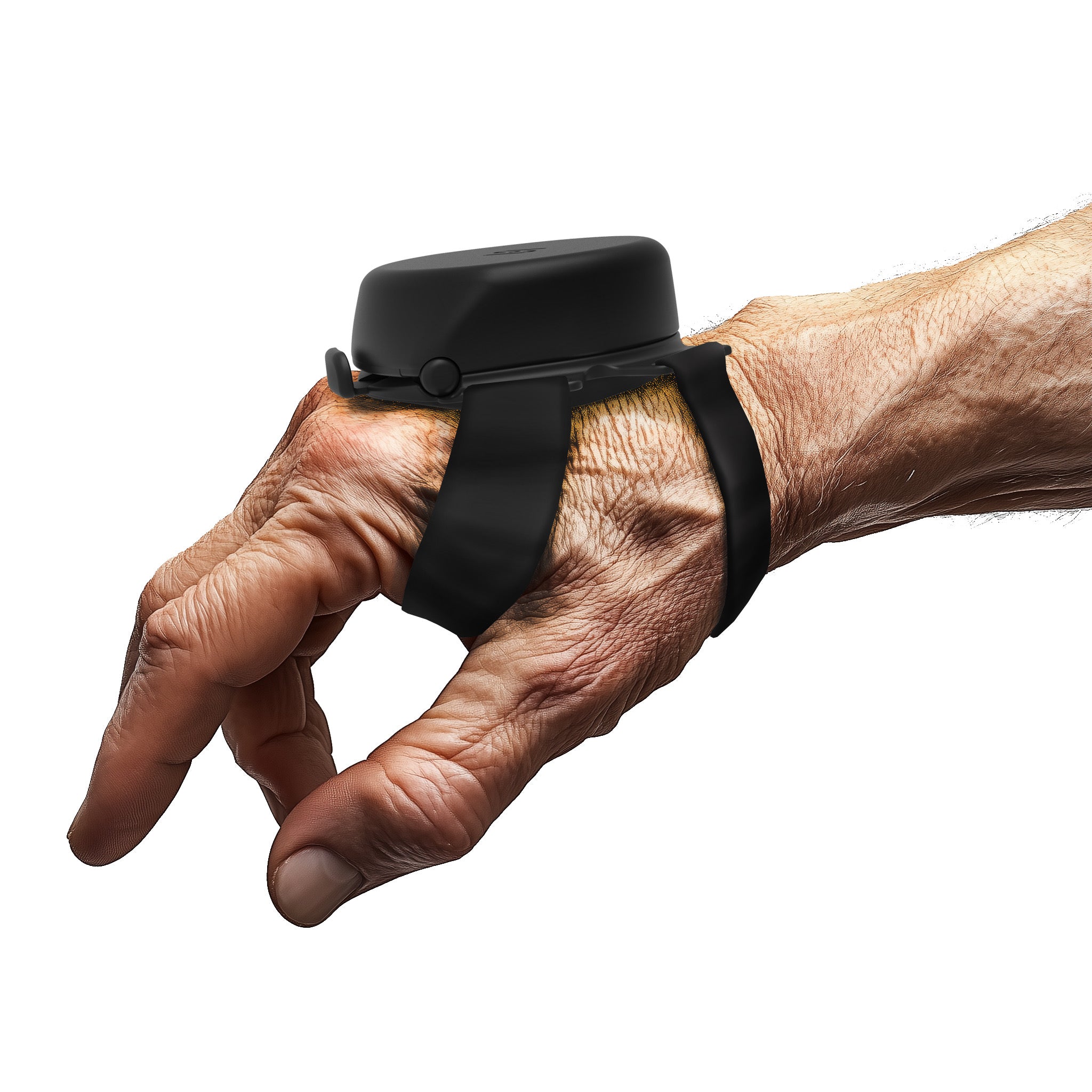Living with Essential Tremor (ET) can turn ordinary activities, such as eating, into daunting challenges, profoundly impacting one's independence and quality of life. In this in-depth exploration, we introduce Steadi-3, a groundbreaking panacea for handling challenging moments of hand tremor. Through Joel's personal narrative, this blog will sort out how Steadi-3 affected some significant changes in his case, helping him effectively manage his tremor. We'll try to explore the technology behind the gadget, its practical application in everyday life, and why it has proven to be a turning point for Joel, who has enhanced his daily independence. Confidence is what the Steadi-3 has given us.
Understanding Essential Tremor and Eating Challenges
What Are Essential Tremor?
Essential Tremor (ET) is a nervous system disorder causing involuntary, rhythmic shaking inside the body. It encompasses vibrations in any part of the body but predominantly involves the arms and hands, which is a significant inconvenience in activities requiring skilled and precise movements. It is a progressive disorder, meaning it may worsen, say, in a span of a few years. While ET can begin at any age, it generally becomes apparent post-40s and can be hereditary, pointing towards genetic factors as key contributors to its onset.
The Science Behind Essential Tremor
The cause of essential tremor is not yet fully understood. Nevertheless, it involves abnormal electrical activity in the brain that originates in the thalamus, a deep brain structure that coordinates and controls muscle activity. Unlike Parkinson's Disease (PD), which also causes tremor, Essential Tremor (ET) does not lead to other severe neurological conditions, but it can significantly increase amplitude as one ages.
The Impact on Daily Life
The impact of ET is not confined to these physical limitations; due to the visible nature of this type of tremor, misunderstanding and social stigma follow. These include activities such as drinking coffee, eating with utensils, applying makeup, or writing that become extremely challenging and embarrassing. This often leads to decreased social activities as individuals may avoid dining out or attending social gatherings to escape public scrutiny or embarrassment.
-
Emotional and Psychological Effects
The persistent struggle of doing simple tasks can build frustration and feelings of inability; it affects the mental state of a person. Anxiety is further increased in social situations when many people notice a person's tremor, and over time it may develop into a social phobia or depression, or even severe social retreat again, reducing the quality of life.
-
Impact on Professional Life
Essential Tremor (ET) can be misconstrued as nervousness or incompetence in the workplace, affecting professional relationships and career progression. Tasks that require precision, such as typing, graphic design, or surgical procedures, can become particularly difficult, forcing some individuals to modify their job roles or retire prematurely.
Joel’s Journey with Steadi-3
-
Before Steadi-3
For Joel, day-to-day activities before getting to know Steadi-3 were tinged by the difficulties his ET condition presented. Simple things would think trivial eating, writing, or holding up a glass of water were frustrating and embarrassing. His shaking would make it hard to handle utensils properly, leading often to spills and accidents during meals. This made Joel feel increasingly obliged to withdraw from social situations that might make these situations occur and cause him embarrassment.
-
Experiencing the Change
Then began the change in Joel's life with the help of Steadi-3. The immediate steadiness of hand movements was so life-changing. With the support the device gave him, he could steadily hold eating utensils and eat with no fear of spillage, thereby returning his confidence for mealtimes. He got this new-found stability that let him engage freely in social interactions and participate in things he had hitherto avoided. Joel's psychological and social benefits were profound: a feeling of greater connectedness to others, a feeling of being more 'fired up' about life courtesy of everyday assistance afforded by Steadi-3. The following case underlines the physical, emotional, and social improvements that effective tremor management can bring into a person's life.
Living with Essential Tremor
On making awareness about Essential Tremor's multiplicity of physical and emotional impacts, we can further appreciate the supportive technologies and understanding communities that could make a significant difference in those affected.
Steadi-3: A Revolutionary Solution
Innovative Technology
Steadi-3 is a handheld camera stabilizer with the most advanced magnetic stabilization technology ever developed to offset the effects of hand tremor in a unique and efficient manner. What makes the technology of Steadi-3 so revolutionary is that it deploys kinetic energy from the movement of its user to activate itself. This way, it does not require batteries, making it environmentally friendly and ready for continuous use. The magnetic fields change in real-time with the intensity and frequency of the tremor, creating a customized response directly opposite to unwanted movements.
Features That Make a Difference
-
Compact Design:
The design of Steadi-3 represents a significant advance in assistive technology for managing tremor. Its compact, lightweight structure makes it much smaller and less obtrusive than earlier models. Such design innovation has made it wearable discreetly and comfortably throughout the day, thus fitting seamlessly into daily life without drawing attention.
-
Tailored Hand Units:
This device has tunable hand units so that the fitting can be done for either of your hands. It is a critical modification since this will enable the device to provide precise stabilization, depending on the needs and nature of the user's tremor. Whether the left or right hand is more greatly affected by the tremor, Steadi-3 can be fitted accordingly.
-
Intelligent Calibration:
Perhaps one of the most innovative features of Steadi-3 is its intelligent calibration system. The system automatically detects changes in the severity of the tremor and readjusts the amount of stabilization force applied. In other words, the device continuously recalibrates throughout the day when the user's tremor patterns change, probably due to stress, fatigue, or other factors that have changed its stabilization for consistency and effectiveness.
Empowering Independence with Steadi-3

At Steadiwear, our mission is more than just symptom management of ET; it's about fundamentally changing the quality of life for people like Joel through innovative solutions and personalized care. Each one of those user stories of regained independence and confidence affirms our commitment and fuels our drive to continuously advance our technology.
We focus on developing a product that integrates seamlessly into daily life, providing relief that feels as natural as it is effective. By listening to our users and understanding their needs, we constantly refine Steadi-3 to meet the evolving demands of tremor management. We celebrate each success story as a shared victory, a testament to the life-changing impact of our dedication to empowering our users.
Conclusion
Joel's transformation with Steadi-3 represents a powerful example of how thoughtful, innovative technology can dramatically improve the quality of life for individuals suffering from conditions related to involuntary tremor. This device is not merely about stabilizing a person's tremor; it provides a sense of normalcy and gives the power back to the users to be confident in conducting their everyday lives. For those suffering from ET or any similar condition, Steadi-3 is reasonably practical in offering a life-enhancing solution that promises more controlled and confident everyday living.

